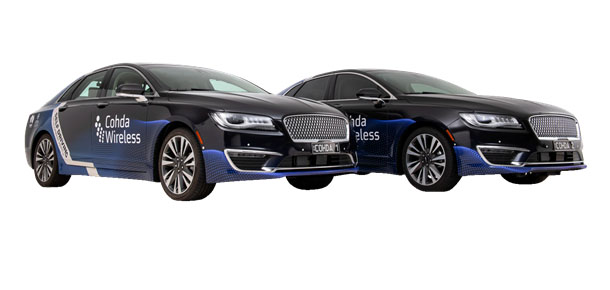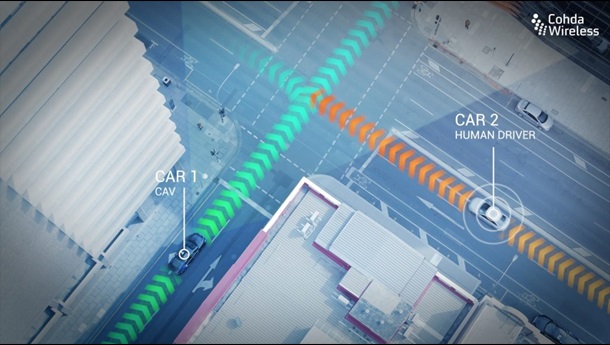AGRICULTURE

Behind the basic premise of autonomy lies the notion that an inanimate object can attain qualities reserved for animated entities, such as an understanding of place within the context of any given environment. A driverless vehicle’s perception must expand that sense of location even further, from coordinates on a static map to proximity with dynamic environmental elements. Employing AutonomouStuff Lincoln MKZ automated research development platforms, Cohda Wireless has developed connected autonomous vehicle (CAV) technology that augments both concepts of locale by sharing perceptions sensor data between autonomous vehicles.
Cohda Wireless Chief Technical Officer Paul Alexander poses questions that only CAVs can answer: “What happens when you connect those cars, when you start to share that information between vehicles in a transparent way? You start to receive information that you never had a chance to see directly with your own sensors.”
The result, the CTO explains, is a significant departure from the line-of-sight limitations inherent to some of the most advanced sensors currently available: “You can see around corners, you can see in front of trucks.”
“By seeing the world through other people’s eyes and merging that view, you can make better judgments, and that’s critical to the safety side of what this technology brings,” he says.
That’s not just talk. Cohda Wireless proved the potential in October 2018 during a live trial on the streets of Adelaide, Australia, where the company lined up two AutonomouStuff Lincoln MKZ automated research development platforms outfitted with Cohda’s V2X (Vehicle-to-Everything) technology. They approached an intersection from perpendicular positions, with line-of-sight views of each other blocked by building facades.

Car 1, operating autonomously, approached a green light, while Car 2, driven by a human, veered toward a red light with no intention to stop, setting the vehicles on a collision course without technological intervention. But the intervention succeeded. Because of the V2X technology, both vehicles identified each other and the situation. The automated Car 1 stopped in time to prevent a crash.
Cohda’s Smart Cars Smart City initiative was funded by the South Australian Department of Transport and Infrastructure’s Future Mobility Lab Fund and made possible the acquisition of both AutonomouStuff platforms. The arrays of sensors and by-wire control systems gave Cohda the ability to exclusively focus on developing their own technology, rather than figuring out all the hurdles to autonomous mobility.
“Cohda isn’t figuring out how to make an autonomous vehicle platform, or how to do route planning,” Alexander said. “We got a great research platform, and that enabled us to directly get our sensors into the platform and show it. … The number of manhours it took us to get to that point was incredible.”
